1. How can I differentiate?
1.1. Content
1.1.1. Modification
1.1.1.1. Change the number or complexity of curriculum expectations
1.1.1.2. Change the grade level of curriculum expectations
1.1.2. Accommodation
1.1.2.1. Reduction in number of tasks used to assess a concept/skill
1.2. Process
1.2.1. Graphic organizers
1.2.2. Using Assistive Technology
1.2.2.1. Voice-to-text software
1.2.2.2. Word prediction
1.2.2.3. "Joystick" controller when mobility is limited
1.2.3. Visual schedules and timers
1.3. Product
1.3.1. Writing an essay
1.3.2. Making a poster
1.3.3. Making a sound recording
1.3.4. Making a video or animation
1.4. Environment
1.4.1. Calming room
1.4.2. Noise-blocking headphones
1.4.3. Strategic seating, proximity to instructor
1.4.4. Covering up the PA speaker so fire alarms are not as loud!
1.4.5. Allowing student to take breaks and/or short walks
1.4.6. Allowing for fidget toys or sensory boards
1.5. Use tiered instruction
1.5.1. Tier 1 - for all
1.5.2. Tier 2 - for some
1.5.3. Tier 3 - for a few
2. Decisions made re: how to differentiate instruction should be based on a student's...
2.1. Readiness
2.2. Interests
2.3. Learning Profile
3. Why do I need to differentiate, anyway?
3.1. It's the law!
3.1.1. PPM 140: Incorporating Methods of ABA Into Programs for Students with ASD
3.1.2. PPM 156: Every student with an IEP must have a Transition Plan
3.1.3. PPM 119: Implementing Equity and Inclusive Education Policies
3.1.3.1. Human Rights Education in Canada
3.2. Promoting equity and inclusiveness: All students in the public school system have the right to access curriculum, regardless of ability
4. Who do I differentiate for?
4.1. Everyone!
4.1.1. Each individual student has their own unique strengths, weaknesses, and learning styles.
4.1.1.1. left-brained
4.1.1.2. right-brained
4.1.1.3. Multiple Intelligences
4.1.1.4. Anxiety and/or other social and mental health challenges
4.1.2. Universal Design for Learning - the teacher providing variety in his/her instruction will benefit everyone!
4.2. Students with IEPs
4.2.1. Giftedness
4.2.2. Learning Disabilities
4.2.2.1. Identified as Exceptional by IPRC
4.2.2.2. NOT identified as Exceptional
4.2.2.2.1. Social, emotional, or mental health-related special considerations
4.2.2.2.2. Safety Plan is needed
4.2.2.2.3. Student has ALT pages in their IEP to deal with Learning Skills or personal management areas
4.2.2.2.4. Parents don't want an identification but the student would still benefit from more individualized programming considerations
